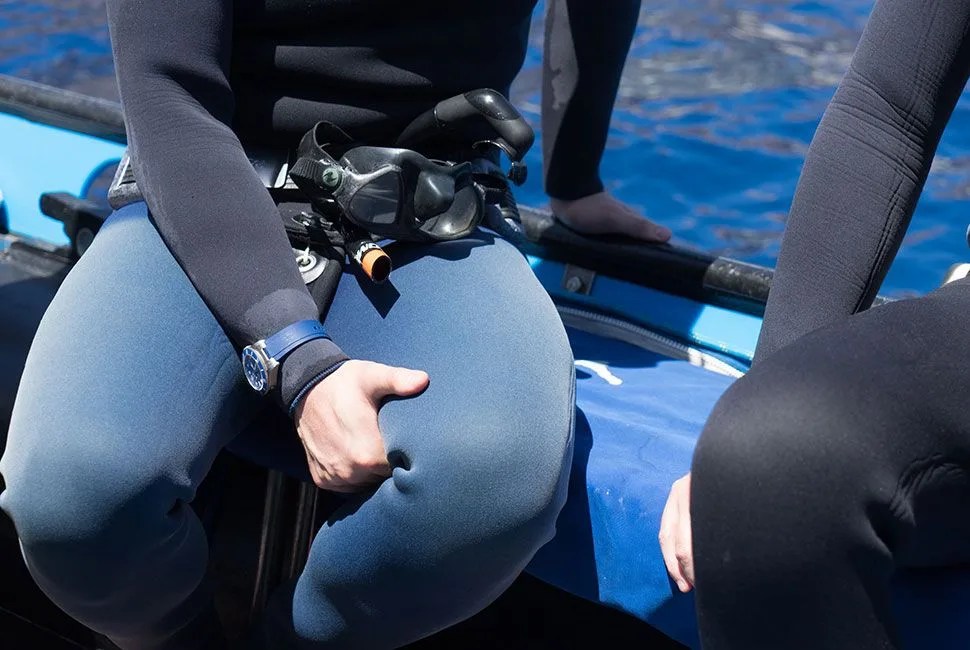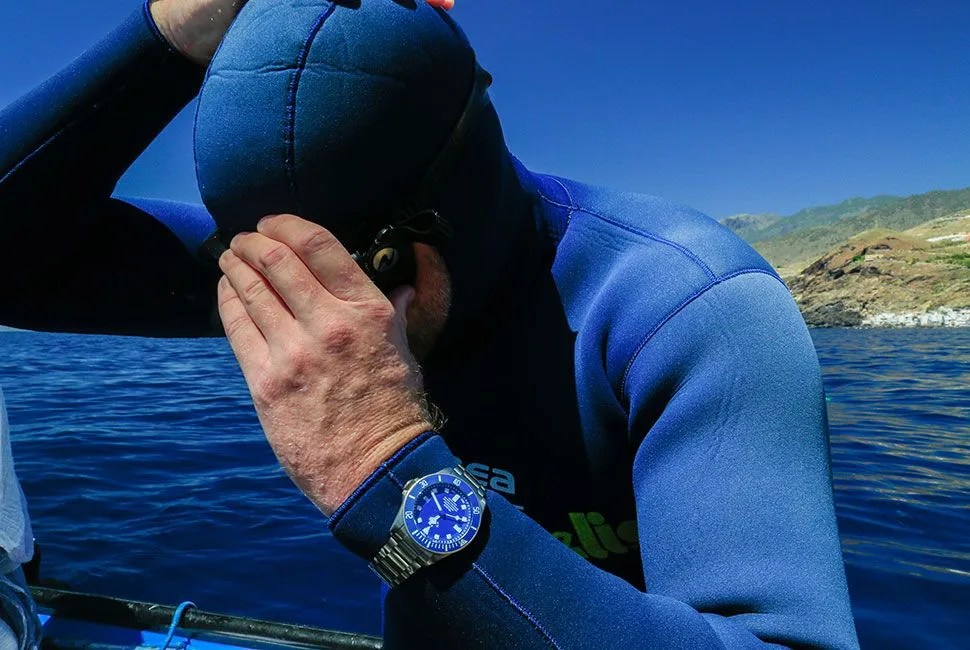5 photos
“Breathing is life, therefore to stop breathing is not normal,” says Morgan Bourc’his, a French champion freediver. “So freediving is symbolic of many things — death, darkness, but also light and rebirth.”
And time. In the hotel pool a day earlier, with the sun warming my back and my mask-clad eyes studying the pastel-blue tile bottom beneath me, I had no problem holding my breath for two minutes. Bourc’his was on the deck tracking the time, calling out the 15-second intervals for my training in this arcane but simple discipline known as “static apnea.” My heart rate slowed to 45 beats per minute thanks to the primitive mammalian reflex that is triggered when your face is submerged. I felt like I could almost go on forever.
But now, 66 feet beneath the Atlantic with no bottom in sight, it was death and darkness I was contemplating and time was my enemy. On my wrist was a diving watch, the Tudor Pelagos, its seconds hand sweeping slowly around the dial, indifferent to my mortality. My descent had only taken 40 seconds, pulling on a weighted rope. I snatched a velcro tag with “-20 m” written on it from a plate at the bottom and aimed for the surface that seemed so far above.
I was in Tenerife, the largest of the Canary Islands, an archipelago of volcanos west of Africa, which are part of Spain. Tudor had invited me there to practice the sport of freediving with Bourc’his and to try out their top-shelf dive watch. It is actually an odd proposition, reviewing a dive watch while holding one’s breath. Dive watches were designed to track elapsed time for divers who carry air with them in their self-contained breathing apparatus (SCUBA). What could I possibly learn about a watch while I was fighting hypoxia, blackout and drowning?
In a sea of dive watches, the Tudor Pelagos is an apex predator. Nowadays, most of the species tend to be nostalgic timepieces that hope to capitalize on the romance of the 1960s, when watches were worn by frogmen boldly exploring the depths. But this is a modern dive watch, in appearance and in its capabilities. The titanium case is light, strong and corrosion resistant, with a scratch-proof ceramic bezel that is, like the dial and hands, fully lumed with bright blue Chromalight. A fully in-house-developed self-winding movement, Tudor’s calibre MT5612, ticks inside, with a hairspring that is immune to magnetic influence and a power reserve that is a healthy 70 hours. It’s entirely matte finished, with nary a shiny surface to be found, and all hard angles and geometric shapes, no flourish. It’s rated to 500 meters, and is as much a tool as the knife you might strap to your leg or the speargun you carry.






